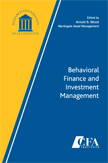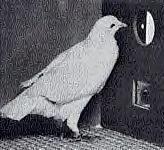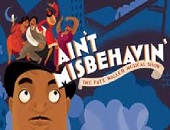“It’s not our ability that makes us, it’s our choices.” With this quotation from Harry Potter, Arnold Wood, President and CEO of Martingale Investments proceeded to show how, in case after case, a good grasp of behavioural finance could explain the workings of the typical investment committee. Wood was speaking to a few dozen charterholders at a luncheon sponsored by the CFA Society Toronto at the historic National Club in Toronto on June 3, 2013.
Wood wove his commentary around three themes: key habitual errors of decision-making, the composition of committees, and the behaviour of the chair of the investment committee. He is a recognized authority who recently edited the CFA publication Behavioral Finance and Investment Management (see cover, this posting).

“Psychological studies show Bayes’ Law and Expected Utility are often violated,” said Wood. Bayes’ Law refers to the use of “prior information” when evaluating likelihoods. Expected utility is a rational assessment of risk and gain. Both are markedly absent in many important decisions made by humans.
Overconfidence and illusions colour our decisions. The human mind works better with bounded rationality. For example, the average wardrobe contains enough items that a million permutations are possible, yet when getting dressed in the morning, a person’s mind typically considers only a handful of possible combinations.
There is an illusion of control in games of chance. On most 50/50 bets, overconfidence in the bettor is greater than 50 percent. “Predictive accuracy is not correlated with intelligence,” he said. He explained the Gambler’s Fallacy, when patterns are seen in randomness.
“Would a pigeon be better at picking stocks than a human?” Wood asked the audience. Psychologists ran the following experiment: tapping a green button yielded a reward 80 percent of the time. Tapping a red button yielded the reward 20 percent of the time. The pigeon therefore pecked the green button 100 percent of the time. The human tapped the green button 68 percent of the time—occasionally switching to red. The audience laughed uncomfortably.

Wood summarized the findings of Goyal and Wahal (2008) on the hire/fire rates of investment managers. They found that managers with a track record of large positive excess returns were hired more often, but that once hired, the new managers’ returns were not very different from the fired managers’ returns. In fact, the fired managers’ returns were slightly greater than the hired managers’ returns.
Graham and Dodd, in a re-issue of their classic work, wrote that the best managers underperform 40 percent of the time. The best managers tended to have their own money invested as well; it was a question of agency theory.
Another aspect of flawed decision-making is that “people
have limited selective memory,” said Wood. “The more information you give, the more their confidence increases—but their accuracy stays the same.” He contrasted intuitive decision-making with cognitive decision-making in a number of areas and recounted some classic pitfalls.
To counteract ingrained defects in decision-making, Wood emphasized the importance of assembling a good committee to deliberate systematically on investment decisions. ª
Link to the CFA publication Behavioral Finance and Investment Management, edited by Arnold Wood: http://www.cfapubs.org/toc/rf/2010/2010/2?s_cid=researchfoundation_Google_Adgroup_Behavioral_Finance&gclid=CJjdvpCSu7gCFUJc3god9j8AgA

